Table of Contents
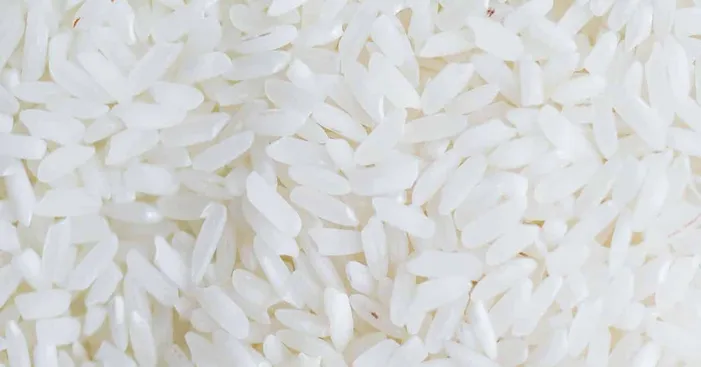
Sweet rice is also called sticky rice and glutinous rice which doesn’t sound very appealing being associated with gluten.
However, it is a special type of rice thanks to its health benefits and unique flavor that has some sweetness.
Commonly, most people serve glutinous rice as a side dish alongside savory recipes or just use its sweetness to make yummy desserts.
In this article, we gathered all the information you need to learn about the culture of sweet rice in Asia, the health benefits and side effects, alongside tips on how to buy, consume and store it.
Culture of sweet rice:

This rice comes from Southeast Asia mainly grown in Vietnam, Laos, China, Thailand, Cambodia, and Burma.
With no exact historical discovery time, some records mention the use of sweet rice 4000 years ago.
For instance, it has been cultivated in China for at least 200 years however researchers believe it was first introduced by the Thai ethnic groups that migrated to South China.
On the other hand, sticky rice is the national dish of Laos and it has been cultivated somewhere between 4000 and 5000 years ago.
Even today, Laos is still the largest consumer of sweet rice per capita with over 370 lbs per person in a year.
Throughout the years, it spread across Asia and made it into many famous Asian recipes such as the famous Japanese mochi made from glutinous rice flour.
Botanically, sweet rice is the result of the evolutionary transformation of wild rice that has high levels of starch.
Nevertheless, the sticky aspect of sticky rice is due to its high amylopectin content while having almost no amylose.
These are the two main components of starch and with that particular ratio, the rice becomes sticky.
This starchy ratio didn’t evolve naturally but rather was the result of agricultural selection performed by Asian farmers.
Difference between classic rice and sweet rice:
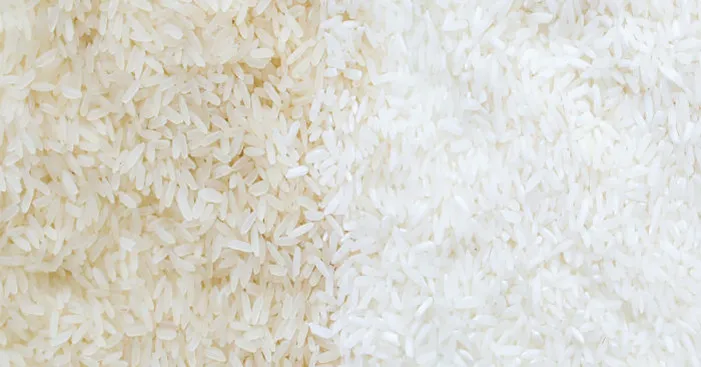
Unlike normal types of rice, sweet rice needs less water to be cooked properly.
In fact, many people choose to steam it instead of boiling it in water which leads to a dough-like texture.
In addition, sweet rice requires a longer time to be totally digested therefore making you feel fuller than classic rice.
A common point that glutinous rice shares with other rice types, even though it is sometimes called glutinous rice it is actually gluten-free.
Heath benefits and nutritional composition of sweet rice:
Nutritional composition:
The main unique feature of sweet rice, in comparison with other kinds of rice, is that it has no amylose while has too much amylopectin.
As mentioned above, glutinous rice is free of glutenin and gliadin AKA gluten and can be a great fit for a gluten-free diet.
Sweet rice comes in 5 different colors black, yellow, white, purple, and red, and those are the color of the thin cover layer.
Most often, the colorful cover layer is removed leaving an opaque white color unique to sweet rice.
Sticky rice gives about 170 calories per 2 ounces and offers good levels of protein and micro-nutrients.
In fact, it is a good source of B vitamins, magnesium, zinc, copper, selenium, and phosphorus.
It also offers a good amount of dietary fibers which is less than classic types of rice but it almost has no cholesterol or fat content.
These data counts for a serving of 2 ounces (50g) of raw white sweet rice:
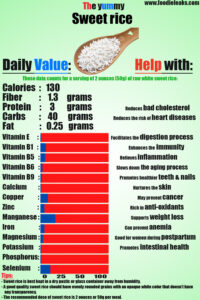
- Calories: 170
- Protein: 3g
- Carbs: 40.5g
- Sugar: 0.02g
- Dietary fibers: 1.3g
- Fats: 0.25g
- E vitamin: 1%
- B1 vitamin : 8%
- B5 vitamin : 7%
- B6 vitamin : 3%
- B9 vitamin: 2%
- Calcium : 1%
- Copper: 11%
- Zinc: 6%
- Manganese: 22%
- Iron : 6%
- Magnesium : 4%
- Potassium: 1%
- Phosphorus: 1%
- Selenium: 14.5%
Health benefits:
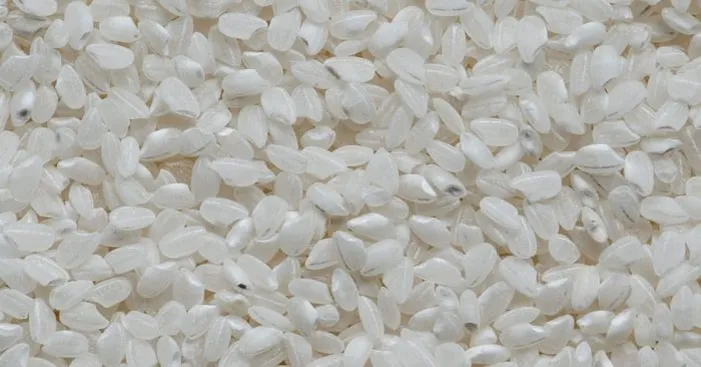
Supports intestinal health:
Glutinous rice is gluten-free unlike other seeds like barley, wheat, and bread.
Certain people follow gluten-free diets as a choice, but others suffer from celiac disease and they have no choice but to eat gluten-free food.
This is because once they consume a gluten product it triggers an immune response that causes abdominal pain, bloating, and damage to the small intestines.
Therefore, people with celiac disease who should avoid gluten products can choose sweet rice as a safe substitution for gluten cereals.
Good for women postpartum:
In just 2 ounces of sweet rice, we find 6% of the daily needs in iron for women and this is why it is recommended after pregnancy.
It also offers 6% of the daily needs of fibers per serving which can ensure a smooth digestion something that postpartum women would benefit from.
Promotes cardiovascular health:
Sweet rice is full of flavonoids and other plant chemicals associated with a reduced risk of heart disease.
Some studies show that anthocyanins in glutinous rice improve cholesterol levels in the blood which prevent the formation of plaque in the arteries.
This means the blood vessels are less vulnerable to clogging therefore there is a lower risqué of blood clots and heart disease.
A good remedy against anemia:
Consuming sweet rice regularly would prevent anemia caused by iron deficiency.
In addition, thanks to the amino acids in glutinous rice protein the body has better absorption of nutrients including iron.
This is very beneficial especially for lactating women and women during menstruation as it helps get their blood to its normal healthy state.
Supports weight loss:
Glutinous or sweet rice is a good source of quality protein and fibers which is a good combination for weight loss.
In fact, fibers make this type of rice very filling and protein reduces the appetite while nurturing the body.
Consequently, you are eating less food while supplying your body with the nutrients it needs with almost no fats at all.
Several animal studies show that glutinous rice help reduces body weight by reducing fat percentage.
Even though there are very limited human studies, consuming sweet rice regularly would be a great asset to weight loss.
Rich in antioxidants:
This rice contains anthocyanins and over 23 plant compounds that have antioxidant properties such as carotenoids and flavonoids.
With such powerful antioxidant properties, sweet rice not only helps the body fight free radicals but also reduces the risk of cancer, Alzheimer’s, and other chronic diseases.
Promotes healthier skin:
Having a diversity of vitamins and minerals necessary to maintain a good skin condition, sweet rice is a great ally for beautiful skin.
In fact, consuming glutinous rice reduces acne appearance and brightens the skin by eliminating dead skin cells thanks to phytic acid.
Also, this rice contains allantoin which has anti-inflammatory properties and can promote wound healing while preventing scarring.
Other benefits of sweet rice:
- Reduces bad cholesterol levels.
- Enhances the immune system.
- Relieves inflammation.
- Slows down the aging process.
- Facilitates the digestion process.
- Natural remedy for diarrhea.
- Maintains healthy teeth and nails.
Precautions before you consume sweet rice:

Even though sweet rice is full of health benefits there are some possible effects that some groups of people may experience.
For instance, this type of rice is full of amylopectin which can cause indigestion.
This could lead to discomfort, especially for young children, newly sick people, and the elderly.
Because of that, it is recommended to not consume more than a serving of 2 ounces (50g) of raw sweet rice to avoid indigestion.
Even though it’s rare, people may experience some allergic reaction to the protein found in sticky rice which manifests in symptoms like:
- Hives.
- Rash and itching.
- Swelling of the lips and tongue.
- Coughing.
- Anaphylactic reaction (requires emergency).
In addition, according to Eastern medicine sweet rice is among the hot foods alongside onions, beef, and spices.
Skin diseases and acne are usually related to access to heat in the body according to Chinese traditional medicine.
In that case, people should avoid consuming hot food including sticky rice so that they don’t aggravate their skin issues.
Also, people who are suffering from fever, cough, phlegm, or intestinal obstruction should not consume sticky rice until they get better.
Finally, people who just had surgery or suffer from inflammatory swelling are better of without sticky rice.
Consuming sweet rice:
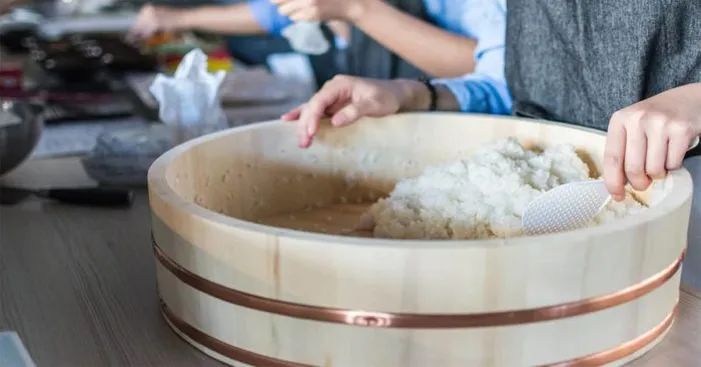
How much sweet rice is a serving?
Sometimes it is so seducing to consume recipes made from sweet rice.
Nonetheless, this type of rice is very filling and you may not wanna eat too much to avoid feeling extra full.
It is recommended to consume no more than 50g (about 1/3 cup or 2 ounces) of raw sweet rice per person.
Cooking sweet rice:
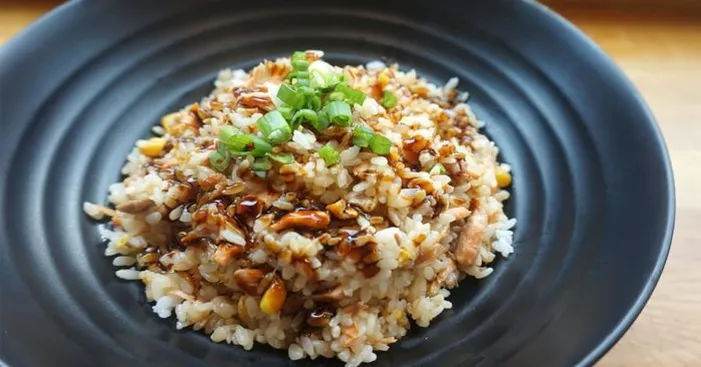
If you cook too much sweet rice and have some left you should also know that it is better to steam it than put it in the microwave.
Unlike classic rice, glutinous rice cannot be cooked at the last minute and requires to be soaked overnight or a few hours before using it.
After that, you just rinse it with water 2 to 3 times before you let it drain on a piece of cloth.
You can then steam sweet rice for about 30 minutes and it will be completely cooked.
Common ideas to consume sweet rice:
In many parts of Asia, people like to consume sweet rice as a breakfast food accompanied by soybeans, corn, fried onion, and sesame seeds.
Also, they like to serve it steamed with chicken meat as a guest dish.
In Vietnam, you can even find snacks made from glutinous rice or sweet rice flour combined with peanuts or grated coconut to form a perfect combo.
Thai recipe: Sweet rice with mango and coconut milk:

Ingredients:
- 1 mango.
- 1 cup of sweet rice (150g).
- 2 ounces of sugar.
- ½ cup of coconut milk (10tbsp).
- A pinch of salt.
Preparation:
- Soak the rice overnight then rinse it, let it dry then steam it for 30 minutes before you let it cool down.
- In a pot, cook the coconut milk with sugar and salt until it starts boiling while stirring constantly.
- Now using a bowl, add about 80% of the coconut sauce to the steamed rice and mix the ingredients.
- Cover the bowl with a piece of cloth and let it rest for 20 minutes.
- Peel the mango and cut it into thin slices.
- Finally, place a portion (50g or 2 oz) of the coconut milk and rice mix with mango slices on the side then pour some of the remaining coconut sauce on top and enjoy it!
Japanese recipe: the famous mochi:

Ingredients:
- 1 cup of sweet rice flour.
- 2 ounces of sugar (55g).
- 1 cup of water.
- Corn starch.
Preparation:
- In a large bowl, mix the rice flour with sugar and make sure they are totally homogenous.
- Add water gradually while stirring until you obtain a soft paste.
- Put the rice paste in a pot and cover it with parchment paper then put it in the microwave for 2 minutes.
- When you take out the paste, it will have a more fibrous structure and may feel harder to mix.
- Knead the dough with your hands then put it back in the microwave for another 2 minutes and keep repeating this process until the paste looks shiny and easy to form.
- Now add 2 tbsp of cornstarch and knead the paste again until it becomes homogenous.
- Flatten the paste then cut it into small circles the size of your hand palms to prepare it for filling.
- You can fill the balls with whatever you like be it crushed pistachios, strawberry, mango, or even steamed rice.
- Once you filled the mochi circles, join their corners together and shape them into small balls.
- Set the balls aside and they are ready to eat or stored in the fridge for the next 2 days.
Buying sweet rice:
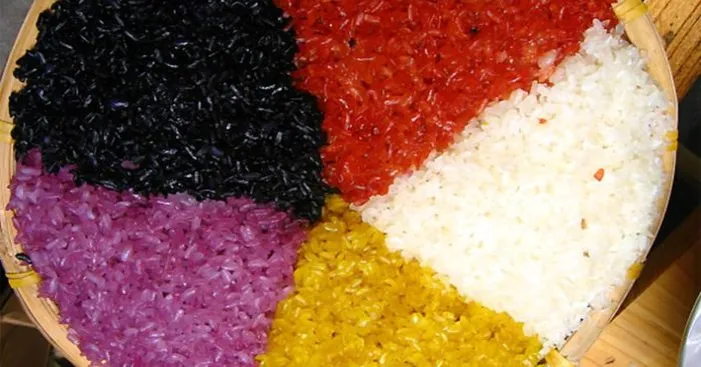
One of the most simple ways to buy the best sweet rice in the market is based on the shape or form of the grains.
Good-quality glutinous rice should have evenly rounded grains with an opaque white color that doesn’t have any transparency.
When you taste a grain of sweet rice, it must have a gentle sweetness with no strange taste or odor.
A natural quality glutinous rice should also leave no smell on the hands after touching it otherwise it means it has been chemically processed.
In case you are buying sweet rice flour, it should be white, fragrant, and feels fine with no impurities.
Storing sweet rice:
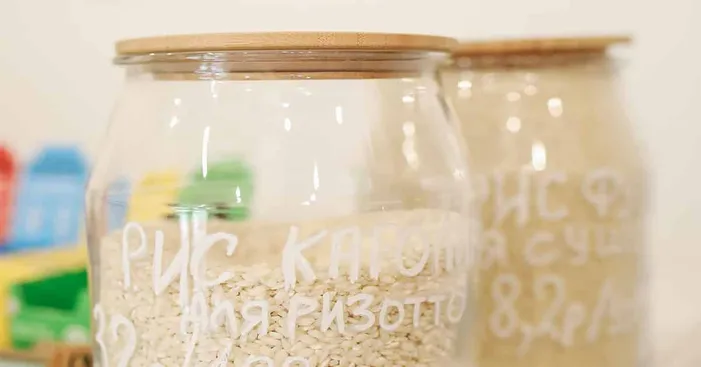
To store sweet rice, you can simply use plastic or glass containers or even bottles however they need to be dried properly.
Even small amounts of moisture inside the plastic or glass container can cause the sweet rice to become moldy.
Make sure you use a piece of cloth to dry the container and then leave it open for 30 minutes to ensure that all the moisture has been dried.
Put the sweet rice in your container and make sure you tightly cover it before placing it in a cool place preferably the pantry or the fridge.
By storing rice in a dry container, it will last for however long you want it to!
As for sweet rice flour, it is best to store it in a glass jar that is tightly covered and placed in the kitchen pantry.
The flour should last up to 6 months but if you see black dots or any type of mold in the flour you should throw it away.
